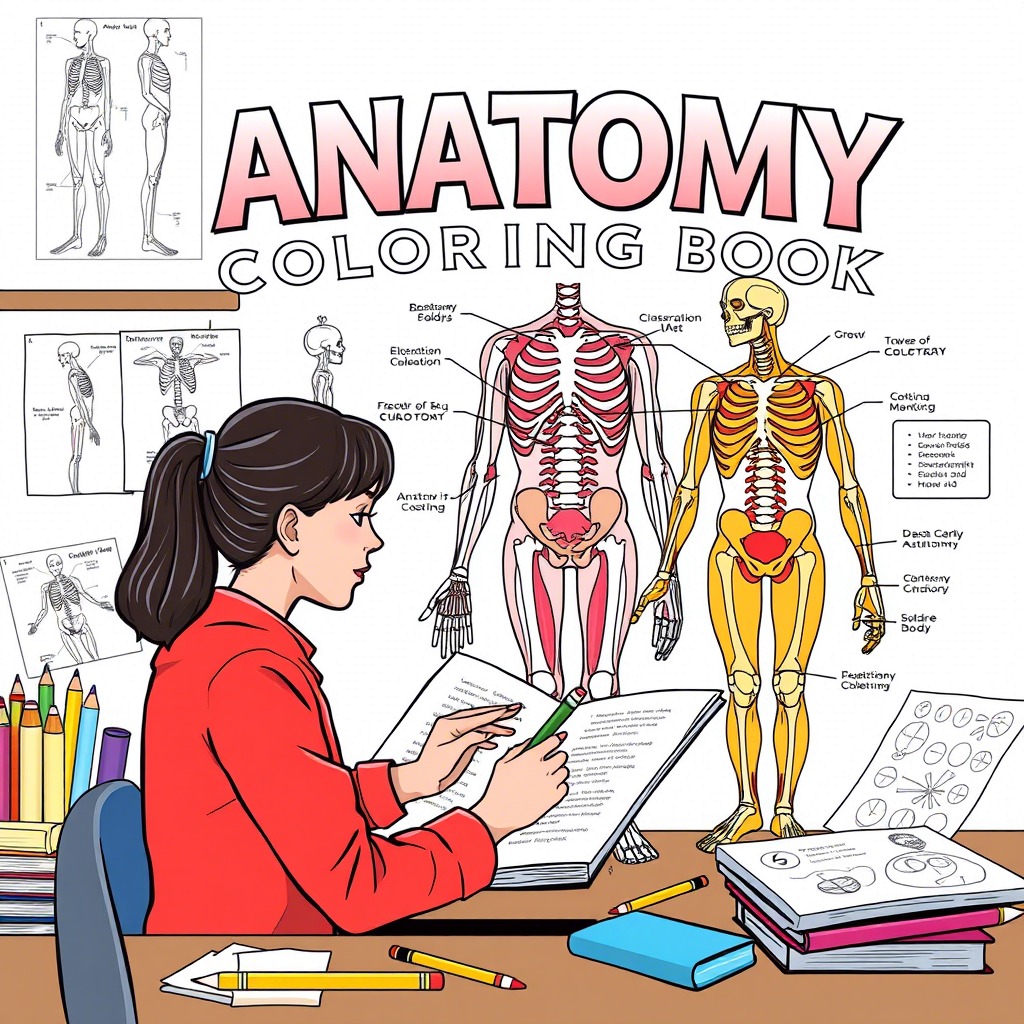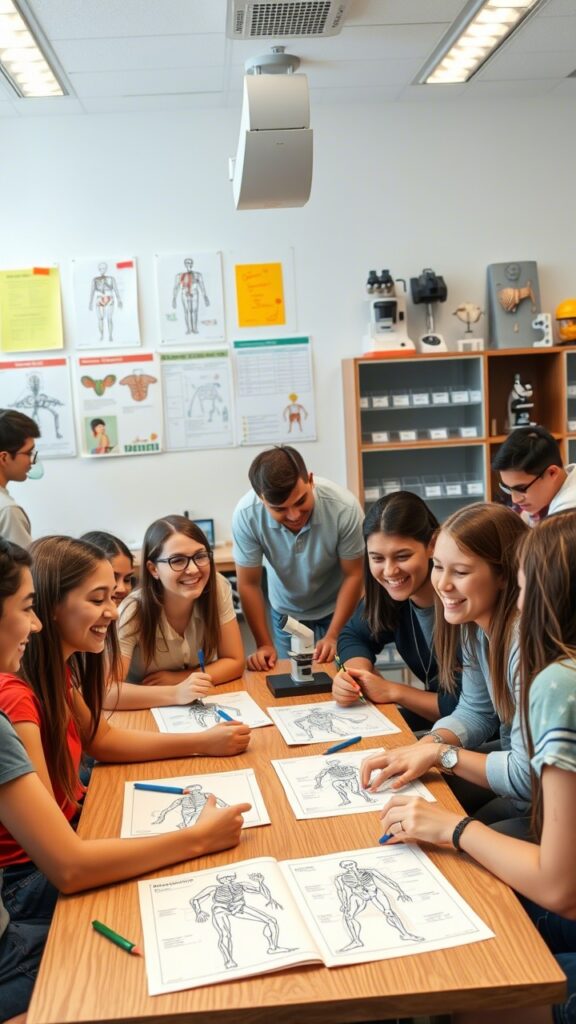
Introduction
Anatomy coloring books have become super popular in schools, colleges, and even home study routines. They are not just fun; they are powerful learning tools. Instead of just reading or listening, coloring engages senses, making learning more active. This multi-sensory process helps learners understand and remember complex parts of the body better. In this article, you’ll discover unexpected ways that anatomy coloring books are more than just coloring pages—they’re real game changers for learning.
The Science Behind Coloring and Learning
How Coloring Enhances Memory and Retention
Did you know that coloring can actually help you remember better? When you color, your brain is doing more than just filling in spaces. It’s activating multiple regions involved in visual processing, movement, and memory. Visual learners often find it easier to recall information when they’ve actively engaged with it, like coloring detailed diagrams. This process turns facts into visual memories that stick longer.
The Impact of Hands-On Activities on Cognitive Development
Studies show manual activities boost focus and problem-solving. When students color, they concentrate more, plan how to shade or highlight different parts, and develop fine motor skills. These skills transfer to other tasks, like taking notes or working with tools. Active participation like coloring encourages deep thinking and supports better understanding of complex subjects like anatomy.
Combining Visual and Tactile Learning for Better Outcomes
Blending what you see with what you touch creates a richer learning experience. Experts agree that engaging multiple senses makes information easier to grasp. For example, coloring a diagram or a muscle group helps you see the relationships and functions more clearly. This multi-sensory approach makes studying more engaging and effective.
Anatomy Coloring Books as Educational Tools
Improving Spatial Awareness and Anatomical Understanding
Coloring helps learners visualize where parts are located in the body and how they relate to each other. It turns abstract labels into concrete images. Many anatomy textbooks now include coloring exercises, so students can highlight bones, muscles, and organs. This active process improves spatial reasoning—knowing where things are and how they fit together is key in anatomy.
Making Learning Engaging and Accessible for Diverse Learners
Coloring books work well for different learning styles. Visual learners thrive with diagrams, kinesthetic learners enjoy the hands-on aspect, and even students with reading difficulties find it easier to connect with images. Many teachers have reported students become more excited and confident about anatomy when using coloring activities.
Reinforcing Memory Through Repetition and Active Engagement
Coloring isn’t just a one-time activity. Doing it repeatedly helps lock in information. For example, coloring a heart diagram multiple times builds familiarity. Tips for effective learning include using coloring as part of review sessions or in quizzes to reinforce key concepts and encourage active recall.

Surprising Ways Anatomy Coloring Books Boost Learning
Reducing Anxiety and Increasing Motivation in Medical Education
Many students find anatomy courses intimidating. Coloring can ease that pressure. The calming act of coloring makes studying feel less stressful and more enjoyable. This can boost motivation, helping students stay engaged and confident. Data shows students who use coloring tools report less anxiety and better focus.
Encouraging Interdisciplinary Learning
Coloring connects art, biology, and even medicine. Students learn anatomy while expressing creativity. Some teachers have students create their own diagrams, combining science with art. Such cross-disciplinary projects deepen understanding and make lessons memorable.
Enhancing Critical Thinking and Observation Skills
Coloring prompts careful observation. Students need to notice tiny details, like the shape of bones or muscle fibers. Challenging exercises, like matching colors to functions, encourage analysis and interpretation. These skills are essential for real-world applications in healthcare and biology.
Supporting Visual Learners and Improving Test Performance
Research shows visual learners excel when they see clear diagrams. Coloring creates mental images that help recall facts during exams. Incorporating coloring into study routines can improve test scores, especially in subjects dealing with lots of images and labels like anatomy.
Practical Tips for Incorporating Anatomy Coloring Books into Learning
Selecting the Right Coloring Book for Your Educational Goals
Choose books that are accurate and suitable for your skill level. Look for detailed images if you want to dive deep, or simpler ones for basic understanding. Check reviews or sample pages before buying.
Designing Effective Coloring Activities
Group activities can boost teamwork and discussion. For individual learning, set goals like coloring specific systems. Use guided questions—”What does this muscle do?”—to deepen understanding as you color.
Using Technology and Digital Coloring Tools
Digital apps offer endless coloring options. They allow for easy editing, zooming into small details, or combining images with labels. These tools can be a great addition, especially when traditional supplies aren’t available.
Integrating Coloring into Broader Anatomy Curriculum
Make coloring part of a bigger plan. Combine it with quizzes, lab exercises, or discussions. For example, after coloring the skeletal system, have students explain the function of key bones or compare them with real specimens.
Conclusion
An anatomy coloring book isn’t just a fun pastime. It’s a powerful device that enhances understanding, retention, and even motivation. By engaging multiple senses and encouraging active learning, coloring transforms how we learn about the body. Whether you’re teaching students or studying yourself, adding coloring to your routine can make a big difference. So grab those pencils and start exploring the amazing world inside the human body—one color at a time.
